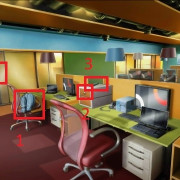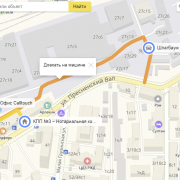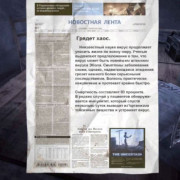Rbmk
Содержание:
Крафт ядерной бомбы
Итак, первое, что вам нужно сделать — это узнать, как именно создается ядерная бомба в «Майнкрафт». Для этого имеется специальный рецепт, который вам нужно запомнить. Для начала соберите необходимые компоненты, которые вам предстоит использовать. В центре всего будет улучшенный корпусный механизм, к которому вам нужно будет добавить две улучшенные микросхемы, а также шесть утолщенных отражателей нейтронов. Из всего этого у вас и получится полноценная ядерная бомба, которую можно будет использовать сразу же после изготовления. Стоит отметить, что в более ранних версиях рецепт отличался — там вам нужно было совмещать порох с обогащенным ураном. Поэтому если у вас не получается бомба в «Майнкрафт», то стоит проверить, какая версия мода у вас установлена. И в соответствии с этой информацией выбирать необходимый рецепт.
Ядерная бомба[править | править код]
Ядерная бомба
| Тип |
Твёрдый блок, сущность (после активации) |
|---|---|
| Действует лигравитация |
Только после активации |
| Прозрачность |
Нет |
| Светимость |
Нет |
| Инструмент |
Нет |
| Возобновляемый | |
| Складываемый |
Да (64) |
| Воспламеняемый |
Да (Активация) |
| Первое появление |
IC v4.73 |
Активированная ядерная бомба
|
Нет |
|
| ID сетевой игры | |
| ID сохранения |
Ядерная бомба — самый мощный тип взрывчатки в IndustrialCraft 2. Поражает огромную площадь, при этом уничтожая 75 % выпавших блоков. Аналогичным эффектом обладает взрыв ядерного реактора при перегреве, однако реактор бьёт больше вглубь, чем на радиус. Активируется только сигналом красного камня или любым переключателем. Время до детонации 15 секунд. На слабых компьютерах взрыв ядерного заряда может понизить количество кадров. Даже на мощных компьютерах большое количество взрываемых ядерных зарядов вызовет падение производительности.
Может использоваться для облегчения обнаружения и/или добычи алмазов и других руд, в том числе и урана. Просто разместите атомный заряд на высоте примерно 15-20 блоков от коренной породы, и если у вас нет нано/квантового костюма, бегите подальше или сделайте укрытие из двух слоёв укреплённого камня, поскольку прочность обсидиана в моде IndustrialCraft 2 сильно уменьшена. Огромная подземная дыра обычно имеет на краях множество руд.
В папке имеется файл , его можно открыть с помощью блокнота. В файле имеется строчка
# Maximum Explosion power of a nuke, where TNT is 4 explosionPowerNuke=35.0
Можно выставить значение на свой вкус, но с увеличением мощности усиливается падение производительности на сервере, вплоть до его падения. Оптимальным является параметр с по .
Начиная с версии 1.106, взрыв ядерного заряда оставляет после себя заражённую радиацией область. К любому игроку или мобу, зашедшему на неё, будут применены эффекты Отравление и Голод.
Ядерная бомба, взорванная рядом с иссушителем, отнимет у него около половины здоровья. Это серьёзно облегчает битву с ним. При правильной организации места призыва иссушителя с парой ядерных бомб он может быть быстро убит, но использование более трёх бомб избыточно, и при любом использовании ядерного оружия следует учитывать его последствия в виде значительных разрушений.
В экспериментальной версии ядерная бомба активируется с помощью лежащего посередине урана или плутония и лежащих по краям блоков промышленного ТНТ.
Крафтправить | править код
В последних версиях рецепт крафта, как и сам блок, перенесен в разряд секретных.
| Ингредиенты | Процесс |
|---|---|
|
Утолщённый отражатель нейтронов +Улучшенная электросхема +Улучшенный корпус машины |
Использованиеправить | править код
В обычной версии ядерная бомба работает как обычный ТНТ (для активации её можно поджечь или дать сигнал красной пыли). В экспериментальной версии:
- В эти слоты помещаются промышленный ТНТ (ITNT). Количество ITNT в одном слоте будет продублировано в остальные. До 1 стопки на ядерный заряд.
- В этот слот помещается плутоний (как полный, так и кусочки) или различные виды урана. Плутоний в несколько раз мощнее, но мощность взрыва не зависит от использованной его формы. До стопки на ядерный заряд.
Production
Desh blend must be refined and processed in a Chemical Plant with Mercury and Light Oil.
Desh blend itself is acquired from Rare Earth Ore, which must either be Centrifuged or Crystallized and then Centrifuged to get the best results. If you don’t have the Silk Touch enchantment, then the fragments dropped must be shredded and then crafted into the blend. Since Desh blend is just a collection of Rare Earth Metals, it can be artificially made using a Cyclotron.
Composition Breakdown
- 2 parts Boron
- 2 parts Lanthanum
- Lithium
- Cobalt
- Neodymium
- Cerium
- Niobium
- Some Mercury
For more information on the components themselves, see Rare Earth Elements.
Взрыв вовнутрь
Направленный внутрь взрыв сдавливает сборку давлением более миллиона атмосфер. Поверхность сборки уменьшается, в плутонии почти исчезает внутренняя полость, плотность увеличивается, причем очень быстро — за десяток микросекунд сжимаемая сборка проскакивает критическое состояние на тепловых нейтронах и становится существенно сверхкритичной на нейтронах быстрых.
Через период, определяемый ничтожным временем незначительного замедления быстрых нейтронов, каждый из нового, более многочисленного их поколения добавляет производимым им делением энергию в 202 МэВ в и без того распираемое чудовищным давлением вещество сборки. В масштабах происходящих явлений прочность даже самых лучших легированных сталей столь мизерна, что никому и в голову не приходит учитывать ее при расчетах динамики взрыва. Единственное, что не дает разлететься сборке, — инерция: чтобы расширить плутониевый шар за десяток наносекунд всего на 1 см, требуется придать веществу ускорение, в десятки триллионов раз превышающее ускорение свободного падения, а это непросто.
Tips and Trivia
- The IRL RBMK technically isn’t a BWR, it’s design is unique to itself, but it’s referred to as a BWR for sake of simplicity and since that’s the reactor classification it most closely resembles.
- A planned machine called a «deaerator», which is a machine that purifies water by removing dissolved oxygen and other gases, is to work in tandem with the RBMK.
- Neptunium fuel (and other fast fissioning fuels) only requires fast neutrons to split, and splits into more fast neutrons. Use this to your advantage.
- Control rod groups can be very useful if used right.
- If things are getting out of control, AZ-5 could potentially make the difference between a saved reactor and a meltdown.
- The AZ-5/A3-5 button on the model of the console is actually called «SPAM» instead, which is a play on the word «SCRAM», which is basically the western equivalent to the A3-5.
- If you right click the «HOW 2 RBMK» book on the console, it will actually give you a guide book which is basically an abridged version of this wiki page.
- It can be burned in a furnace for 4 operations.
- Since the book is a part of the model, it will remain there even if you «take» it. There is a cooldown of several seconds until you can pick up another to mitigate this slightly.
- Highly prone to Chernobyl jokes.
- Some fuels are not finished.
- Spent fuel can contain Xenon-135
If you do not wish to have the Xenon byproduct, you can just expose the highly depleted rod to a neutron source rod (maybe near some neutron reflectors so you don’t have to use too many source rods) and when the Xenon burns away, remove it manually.
poison, which can be extracted in tiny amounts if it is high enough.
- While fuel rods cool much faster when inside the reactor, this may not be feasible if you are actively replacing depleting fuel rods or if the fuel is self-igniting, use a Spent Fuel Pool Drum to cool them down in these cases.
- Fuel rods increase in radioactivity as they deplete to simulate the effect of accumulating fission and neutron absorption products.
- This includes DRX as well.
- Xenon-135 also massively increases radiation.
- The exceptions are Highly Enriched Australium Fuel and Low Enriched Australium Fuel, which are fully stable even after depleting and accumulating Xenon.
Ударная волна и атомный гриб
При отрыве ударной волны от огненного шара меняются характеристики излучающего слоя и резко возрастает мощность излучения в оптической части спектра (так называемый первый максимум). Далее конкурируют процессы высвечивания и изменения прозрачности окружающего воздуха, что приводит к реализации и второго максимума, менее мощного, но значительно более длительного — настолько, что выход световой энергии больше, чем в первом максимуме.

Вблизи взрыва все окружающее испаряется, подальше — плавится, но и еще дальше, где тепловой поток уже недостаточен для плавления твердых тел, грунт, скалы, дома текут, как жидкость, под чудовищным, разрушающим все прочностные связи напором газа, раскаленного до нестерпимого для глаз сияния.
Наконец, ударная волна уходит далеко от точки взрыва, где остается рыхлое и ослабевшее, но расширившееся во много раз облако из конденсировавшихся, обратившихся в мельчайшую и очень радиоактивную пыль паров того, что побывало плазмой заряда, и того, что в свой страшный час оказалось близко к месту, от которого следовало бы держаться как можно дальше. Облако начинает подниматься вверх. Оно остывает, меняя свой цвет, «надевает» белую шапку сконденсировавшейся влаги, за ним тянется пыль с поверхности земли, образуя «ножку» того, что принято называть «атомным грибом».
Применение ядерного заряда
С помощью атомной бомбы можно решать практические задачи, а можно и чисто игровые. Вот, например, присмотрели вы себе участок. Всё в нём хорошо, да вот беда – гора рядом, а вы не выносите гористую местность. Знаменитая формула «E=mc2», будьте уверены, оправдает ваши надежды, и домик вы построите на равнине. Или же вам нужно добраться до какой-нибудь породы, сокрытой в недрах Майнкрафт. Зачем тратить силы и время, если энергии атома с лихвой хватит, чтобы убрать всё лишнее.
Словом, сфер применения масса. Но можно и поразвлекаться. Очень увлекательно, скачав карту «Чернобыль», устроить настоящий взрыв на ЧАЭС. Прошло уже почти три десятка лет с момента трагедии, но вы можете повторить её, с той лишь разницей, что от трагедии останется только название. Смотреть, как взрывается ЧАЭС или любая другая АЭС, зная, что вам ничто не угрожает – дорогого стоит.
DFC Components
Dark Fusion Core (DFC)
The core’s function is to increase the emitter beam’s power, generating insane amounts of HE. It needs 2 reaction catalysts and 1 DFC core to work, while being stabilized by the stabilizers, and having fuel in its reserve. When receiving a beam from the emitter, it activates, expanding and glowing in different colors depending on the catalysts inserted. The beam passing through the core can then be used with a receiver to channel the beam into HE, or with a tungsten crate to be used in Yharonite production. If a mob or player gets too close to the DFC while it’s running, it will catch fire and take high amounts of damage.
The core has 4 indicators: Fuel 1, Fuel 2, Restriction field, and heat saturation. When the restriction field reaches 0%, the core will melt down, leaving a crater larger than 500 blocks in diameter. Heat saturation is the amount of stacked emitters the core can process without melting down. When it reaches 100%, the core will also melt down.
DFC Emitter
DFC Emitter chain. The gaps are for demonstration, this can be done without gaps.
The emitter produces a beam, that upon penetrating a valid core, will increase the beam’s energy output. In order to store it, you will need the amplified beam to enter the DFC receiver. It needs cryogel and power to work, if it’s turned on without cryogel, it will melt to lava. It can also be stacked by chaining emitters, however, only 90% of the previous emitter’s power will be added. The beam does 50 damage and destroys any blocks it touches. Its energy output can be controlled, going from 1% to 100%.
DFC Receiver
The receiver catches a beam pointed towards its front face, and converts it into HE. It needs Cryogel to work, and will melt if it runs out of cryogel. Depending on the fuel and core, this will output energies beyond what a single spark energy storage block can hold per second.
DFC Stabilizer
The stabilizer ensures the core doesn’t melt down during operation. It needs power and a stabilizer lens in the lens slot to work. Like the emitter, its output can be set from 1% to 100%, higher percentages consuming more power.
DFC Fuel Injector
The Injector takes 2 fuels from connected pipes, and inserts them into the core. This component doesn’t require power, and the fuel can be changed using fluid identifiers. It doesn’t have any fluid container slots, so it can only be filled using pipes.
Tungsten Crate
While not required for the DFC’s operation, this can be used instead of a receiver for several purposes. One of them being as an instant furnace that processes items without delay which can be done with any setup. The other being for Yharonite production, although this needs an output of at least 10MSpk, which can be checked with a receiver. The crate can also be used without the core altogether, though this only works with a limited number of recipes.
Trivia
Almost every satellite is made out of KSP (Kerbal Space Program) parts. All satellites follow the same structure, except the top part.
- Most satellites are composed of three major parts in addition to the specific tool mounted on top:
- An LV-909 «Terrier» liquid fuel engine, with the appearance being that of the engine from earlier KSP versions
- An FL-T400 fuel tank
- Two radially-mounted «Gigantor XL Solar Array» photovoltaic panels on opposite sides
- Optionally, the generic «cone» on top of the fuel tank could be counted as the FL-A10 Adapter.
- The surface mapping satellite has a slightly edited version of the «SENTINEL Infrared Telescope» on the top.
- The Satellite with depth-resource scanning module has an opened «M700 Survey Scanner» on the top.
- The radar survey satellite has either a «RA-100» or a «RA-15» relay antenna.
Trivia
- Considering its lore discovery and production methods in outdated versions, it implies that depleted Schrabidium fuel contains tiny amounts of Euphemium, but not enough to be of any worth.
- Of particular interest, only the base ingredients (ingots, nuggets, powder, etc.) of Euphemium tools and weapons appear in the creative menu, despite the whole set appearing in NEI.
- It supposedly tastes like strawberries (relating to its pink color perhaps), but we do not recommend you consume or make oral contact with any exotic matter.
- In older releases, Euphemium’s production has been buffed due to how easy Schrabidium was obtainable, then when Schrabidium’s production itself was buffed, it was «de-buffed» back to normal.
- Euphemium appears to be negative-energy type exotic matter, which means that it should
Negative energy should not be confused with antimatter, which is still positive energy. Instead of creating a massive energy release on contact (), it simply erases itself and whatever it contacted out of existence ().
erase matter and energy out of existence on contact (which it does in the custom nuke) without proper containment. Thankfully, it does not due to it being unusually inert.
- The name appears to be a reference to Euphemia li Brittania, a character from Code Geass. It would make sense as she was related to the creation of the F.L.E.I.J.A. bomb, which is also present in this mod and requires this material.
Usage
It is not recommended to completely fill it with pure schrabidium pellets, as it would run poorly and be unsafe. Ideally, it uses a good combination. Remember, higher «ranking» pellets provide more energy per tick, but have poorer multiplier stats and deplete faster, while lower-ranking ones provide less power per tick, they have better multiplier stats and last longer.
Pellet Stats
| Pellet | Type | Maximum Age (ticks) | Power Per Tick (HE) | Power Multiplier | Heat Provided | Heat Multiplier | Decay Multiplier |
|---|---|---|---|---|---|---|---|
| Pure Schrabidium | Fuel | 50,000 | 14,000 | -2.5% | 200 | +5% | +5% |
| HES | Fuel | 108,000 | 6,500 | 0% | 85 | 0% | +2.5% |
| MES | Fuel | 216,000 | 2,300 | +2.5% | 50 | 0% | 0% |
| LES | Fuel | 432,000 | 700 | +5% | 15 | 0% | -2.5% |
| Beryllium | Moderator | 864,000 | 5 | +5% | -5% | +2.5 | |
| Neptunium | Fuel | 216,000 | 300 | +10% | 25 | +10% | +0.5% |
| Advanced | Moderator | 216,000 | 100 | +10% | -0.5% | -1% | |
| Lead | Reflector | 1,728,000 | -5% | -5% | -5% |
Pellet Notes
(In order from the table above)
Good for producing power quickly, but poor stats and lifespan require moderators.
Alternative for Pure Schrabidium, slower, but safer.
It only has a power multiplier, but it still makes good energy.
Makes very little power, but it has good stats to negate higher tier pellets’.
Very good stats and lifespan, except for its decay multiplier.
Very good power multiplier, but poor heat stats, irrelevant if you control your heat production.
Expensive, but the overall best moderator, decent lifespan, and decent stats other than power.
Cheap, but bogs down power production, just let a Pure Schrabidium pellet decay into one.
Mechanics
Neutrons
Neutrons are what make fuel split and heat up. Neutrons are generated by fuels marked as self-igniting are in a fuel rod or when fuel is impacted by the right neutron type. Fuel has a tooltip which shows which neutron type it needs to split, as well as what type it splits into. Neutrons only travel horizontally and follow a straight path until they reach another fuel rod or a reflector. Self-igniting fuels generate neutrons automatically, and can react with itself; too many self-igniting fuel rods can lead to a meltdown.
Neutron source rods are a «special» type of self-igniting rod, they do not fission and do not produce a lot of heat on their own. They also deplete quickly, so you should remove it and replace it with a regular fuel rod once the reaction has started to be most efficient.
Heat
Fuel rods, when experiencing fission, generate heat. Heat is transferred to adjacent components, and can be used to generate steam for power generation. Components also gradually cool down through passive cooling, which increases depending on how many components your reactor has. This means you should be careful with adding too many structural columns, as it could cool the reactor down beyond any usable temperatures.
Xenon Poison
Xenon-135 is a common product resultant from fission reactions, which can build up in the fuel rods of a reactor and act as an undesirable neutron absorber. Simply put, this is something that slows down fuel reaction when you don’t want it. Xenon «burns» away at higher power, so if your reactor can output enough neutrons, you shouldn’t worry much about it. It may be problematic if you wish to run your reactor at low power however, as it may drop the reaction too much or halt the reaction entirely.
Xenon can also be a problem with certain types of fuels that require an initial neutron flux burst to initiate criticality and become self-sustaining or requires a significant driver to keep it critical. Xenon prevents this initial neutron burst from being as effective and thus requires increased power (ie raised control rods) to burn it off and attain criticality. This means that once the Xenon is burned off, the flux level will be at a level far higher than what would’ve been necessary, potentially causing a meltdown if the reaction doesn’t stabilize itself or by means of lowering control rods.
Fuel Temperature
When fuel reacts, it generates heat, which is shown as core and skin temperature. As stated before, core temperature doesn’t matter too much, as it can be way higher than the skin temperature which is what transfers to the fuel rod block. Skin temperature is almost always higher than the reactor temperature even if you have good cooling due to heat transfer. As long as the skin temperature is nowhere near the melting point of the rod and flux is stable, you should be fine.
Meltdown
RBMK meltdown mid-explosion. Notice the debris flying out.
Probably the most interesting part, a meltdown is when things get out of control and the reactor literally melts. It happens when the skin temperature gets past the melting point of a given fuel, or when a reactor component’s temperature reaches more than 1500 ºC. It explodes violently, releasing debris and high amounts of radiation into the environment. Debris can be collected by hand and will give you the respective debris item. They can’t be processed yet, and are just waste for now. After a meltdown, Corium replaces the fuel rods and is highly radioactive, while regular RBMK debris variants replace the rest of the components. Corium solidifies over time, turning into corium blocks which are fatally radioactive in seconds; cleanup is extremely difficult until they have decayed as a result. Reactor Corium and Sellafite-Corium are not to be confused.
ReaSim (Realistic Simulation)
ReaSim is both a gamemode and set of alternate components that are meant to give a more «realistic» style to the reactor on top of its mechanics. ReaSim fuel columns emit neutrons in a random set of 6 directions, instead of the 4 cardinal directions (they can also be made automoderated with a cheaper recipe). Steam boiling can be done within any component column, water can be inserted and steam extracted with special inlets, however the only steam compression type usable is super dense.
The Hell Zone
The nether has not changed significantly since installing Nuclear Tech, aside from two things:
- There’s now a couple of ores spawning in the nether, most notably uranium, tungsten and sulfur, all of which are also found in the overworld
- The nether in its entirety is now slightly radioactive
The last fact might frighten you, but be assured it’s just a mild 0.1 RAD/s which isn’t all that big of a deal. It would take almost 3 hours for you to die in the nether from radiation, so take your time and get some quartz. Might as well use some phosphorous, but watch out for the white ingots — they’ll set you on fire if you don’t have a suit to protect yourself from them. There’s also plenty of uranium which becomes interesting later.
Usage
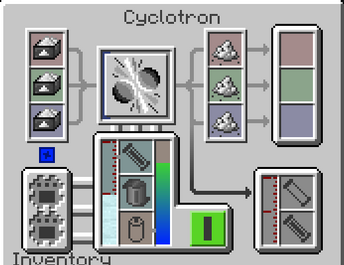
Example Cyclotron GUI
The compatible elements for boxes are: Lithium, Beryllium, Carbon, Copper, and Plutonium. They are made in the assembly machine combining one powder with one insulator.
Many of the elements produced have very few uses, usually for Nitanium production or being an intermediary step for another rare element, such as one of the Rare Earth Elements or trans-schrabidic super heavy elements, notably Australium.
Due to the expense of running, it should only be used for very rare elements (for further use in Nitanium or Desh for example) or Antimatter.
Although if you can afford to run this machine consistently (possibly utilizing a mining ship), you can use this machine as a stand-in for an energy-matter fabricator (think the replicator from Star Trek), though that would be purely for flex material as it is not sustainable in any sense.
The cyclotron can store up to 100 MHE and 32,000mb of coolant. Power is consumed very quickly at 690 million HE consumed per operation. Use all three slots at once to be most efficient. A Schrabidium Energy Storage Blocks at the minimum should suffice for a few operations. Coolant is consumed quite slow, so you don’t have to worry about that.
If it runs out of coolant, it will enter an overheat phase and shoot sparks and shrapnel all over. You have around a minute of continuous operation until it completely overheats and explodes into either: a mini-nuke explosion, a Balefire explosion, or spawn a black hole.
Antimatter and Antischrabidium
Antimatter is produced as a byproduct of operation, heavier element boxes produce more antimatter. The cyclotron has 8,000mb of internal storage for antimatter.
Antischrabidium is produced by bombarding an Antimatter cell with Plutonium.
Meteor Ores
Meteors have several specials ores that have generally better outputs outputs when smelted
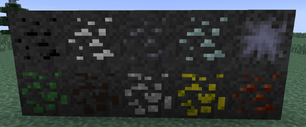
Meteor ores.
The random meteor ores are weighted so some of them are more common than others. Weights are listed below.
Meteor ores include:
Meteor uranium (3/52 chance) gives 2 uranium ingots when smelted,
meteor thorium (5/52 chance) gives 2 th232 ingots when smelted,
meteor titanium (6/52 chance) gives 3 titanium ingots when smelted,
meteor sulfur (7/52 chance) gives 2 sulfur when shredded,
meteor copper (8/52 chance) gives 3 copper ingots when smelted,
meteor tungsten (5/52 chance) gives 3 tungsten ingots when smelted,
meteor aluminum (7/52 chance) gives 3 aluminum ingots when smelted,
meteor lead (6/52 chance) gives 3 lead ingots when smelted,
meteor lithium (4/52 chance) gives 1 lithium cube when smelted,
and meteor star metal (1/52 chance) gives 1 starmetal ingot when smelted.
Note: These do have ore dictionary support, so even stuff that gives less than 3 output can be processed by machines from other mods to give more.
Trivia
- After its rework, the cyclotron has fewer recipes than it did before.
- The Cyclotron appears to have 4 small tanks on its corners, presumably by the way they look: 2 for antimatter storage and 2 for coolant storage.
- Each side has a different symbol on it, see the gallery.
- The side with the «powder» symbol uses a silhouette of the powder texture used as a base for Energy Powder, Nitanium, Desh, Spark, and thermonuclear ashes instead of the typical powder texture for material powders.
- Placing in Thermonuclear Ashes, The Book of Boxcars, a Mask Man
It as originally supposed to unlock special recipes, but it never got to that point.
coin, and a Diamond Gavel in the respective slots activates an «enchanted» mode with a fancy render.
«Атомные» нюансы
Ядерный заряд станет доступен в Майнкрафте, если установить «Industrial Craft2». Взрыв поражает очень большую площадь, уничтожая 75% блоков. Если разрушающий эффект перегревшегося реактора АЭС в Minecraft направлен больше вглубь, то атомная бомба стремится поразить вокруг себя.
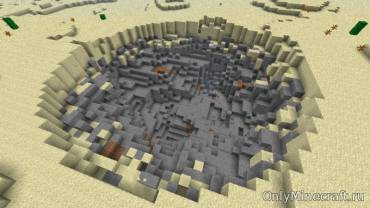
Активируется она лишь редстоуном или переключателями. Интервал между активацией и детонацией – 15 секунд. Слабому компьютеру заряд грозит понижением количества кадров. Мощному пк один взрыв не страшен, но большое их число вызывает лаги.
Защитой от взрыва в Майнкрафт является квантовый или нанокостюм. Если его нет, можно сделать двухслойное укрытие из укреплённого камня. Жаль, что такими костюмами не обладали спасатели на ЧАЭС. C v. 1.106 взрыву сопутствует радиация, а это чревато эффектами голода и отравления. Вообще, расщеплённый атом очень опасен, поэтому будьте аккуратнее: что на АЭС в Minecraft, что с атомной бомбой.
Ядерную бомбу, точнее, её силу, можно регулировать. В «.minecraft/config» присутствует файл «IC2.cfg». Если его открыть (сделать это можно Блокнотом), можно увидеть такую же, как на скрине, строчку. На скриншоте значение мощности – 35.0. оптимально будет поставить значение от восьмидесяти до ста. Нужно понимать, что, чем больше число, тем больше проблем на сервере или вашем пк (будет вам персональная ЧАЭС).

Ядерная «петарда» способна справиться в Майнкрафте и с иссушителем. Один заряд отнимает у того половину здоровья. Два-три заряда, и иссушитель погибнет. Главное, заманить того к месту с бомбой. А можно, кстати, приманить его к АЭС и перегреть реактор. Правда, дороговато выйдет.
Подробнее о предметах плагина NuclearMC:
Уран
• Урановая руда может быть получена путем добычи. Различные руды / блоки имеют настраиваемую вероятность выпадения урановой руды при добыче.
• Урановая руда бесполезна до тех пор, пока ее не обогатят путем плавки. Обогащенный уран используется для изготовления топливных стержней для реакторов и ядерного оружия.
Ядерные реакторы
• Чтобы создать ядерный реактор, вам необходимо разместить 1 активную зону реактора, 3 котла, 1 бункер и 1 печь в конфигурации, показанной ниже (примечание: печь должна быть размещена последней):
• Чтобы использовать ядерный реактор, просто поместите топливные стержни в бункер. По умолчанию 1 топливный стержень будет питать печь столько же времени, сколько ведро лавы (1000 секунд).
• Радиоактивные ядерные отходы будут образовываться во время работы реактора и будут помещены в бункер или сброшены на землю, если бункер заполнен.
Ядерные отходы будут излучать игроков, если они будут держать их в своем инвентаре или стоять рядом с ними, когда они лежат на земле. Носите защитное снаряжение, чтобы уменьшить его эффект!
• Пока реактор работает, он израсходует воду в котлах. По умолчанию каждые 30 секунд используется 1 уровень воды в котле.Если в реакторе закончится вода, он расплавится (взрыв + радиация в окрестностях)
Ядерное оружие
• Есть два вида ядерного оружия: атомная бомба и водородная бомба.
• Оба оружия вызывают сильный взрыв при ударе и излучают окружающее пространство, но водородная бомба более мощная.
• Чтобы запустить ядерное оружие, щелкните предмет, глядя в том направлении, в котором вы хотите запустить ракету, и она взорвется при ударе.
Радиация
• Уровень радиации игроков отображается на панели босса, как показано ниже (панель босса исчезнет, когда их уровень излучения будет равен 0).
• Источники излучения включают: хранение ядерных отходов, стояние рядом с ядерными отходами, аварии реакторов, ядерное оружие и регионы Worldguard с флагом рад в секунду.
• Эффекты излучения настраиваются, но по умолчанию эффекты следующие: слабость, начинающаяся с 25 рад, тошнота с 50 рад, увядание с 75 рад и вред со 100 рад.• Уровень радиации игроков будет медленно снижаться с течением времени, или они могут использовать таблетки радиации, чтобы значительно снизить уровень радиации.
• Количество радиации, получаемой игроком от источника радиации, можно уменьшить, надев защитную экипировку. Для каждого элемента защитного снаряжения, который носит игрок, количество получаемых рад уменьшается на 25%, поэтому, если игрок носит полный защитный костюм, он полностью защищен от любого излучения. По умолчанию,Рецепты изготовления хазматов такие же, как и у обычных доспехов, но материал — губка.
